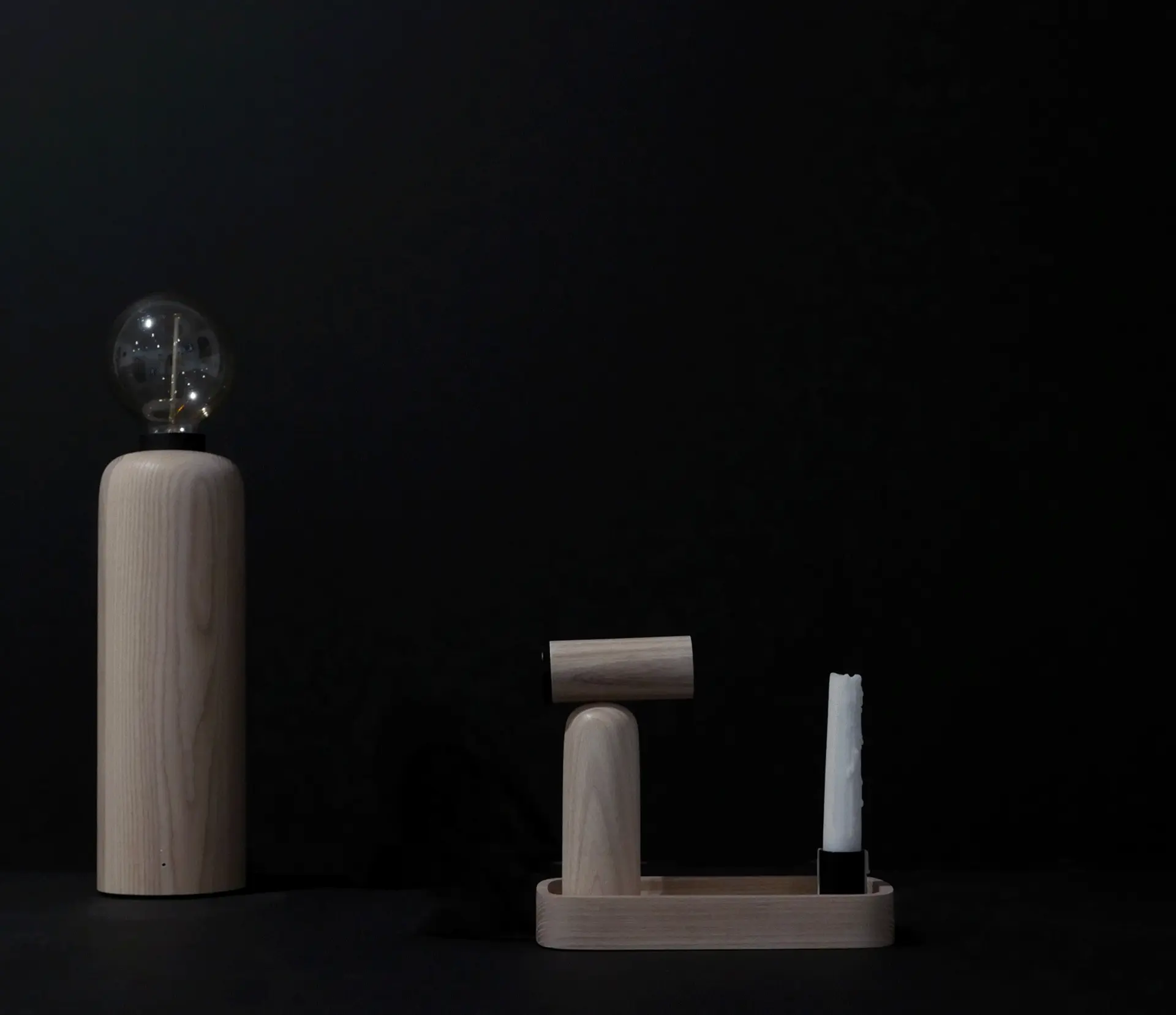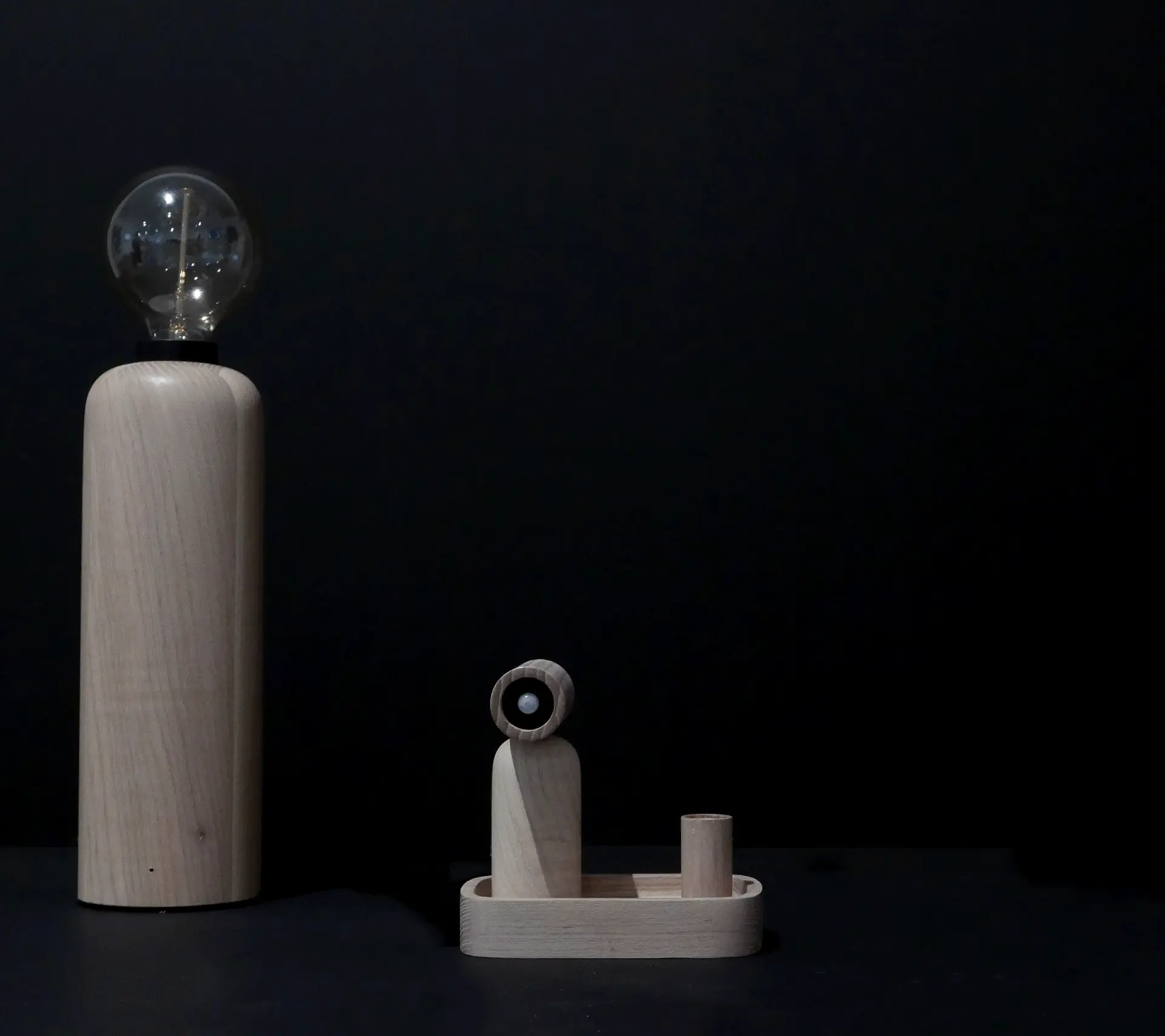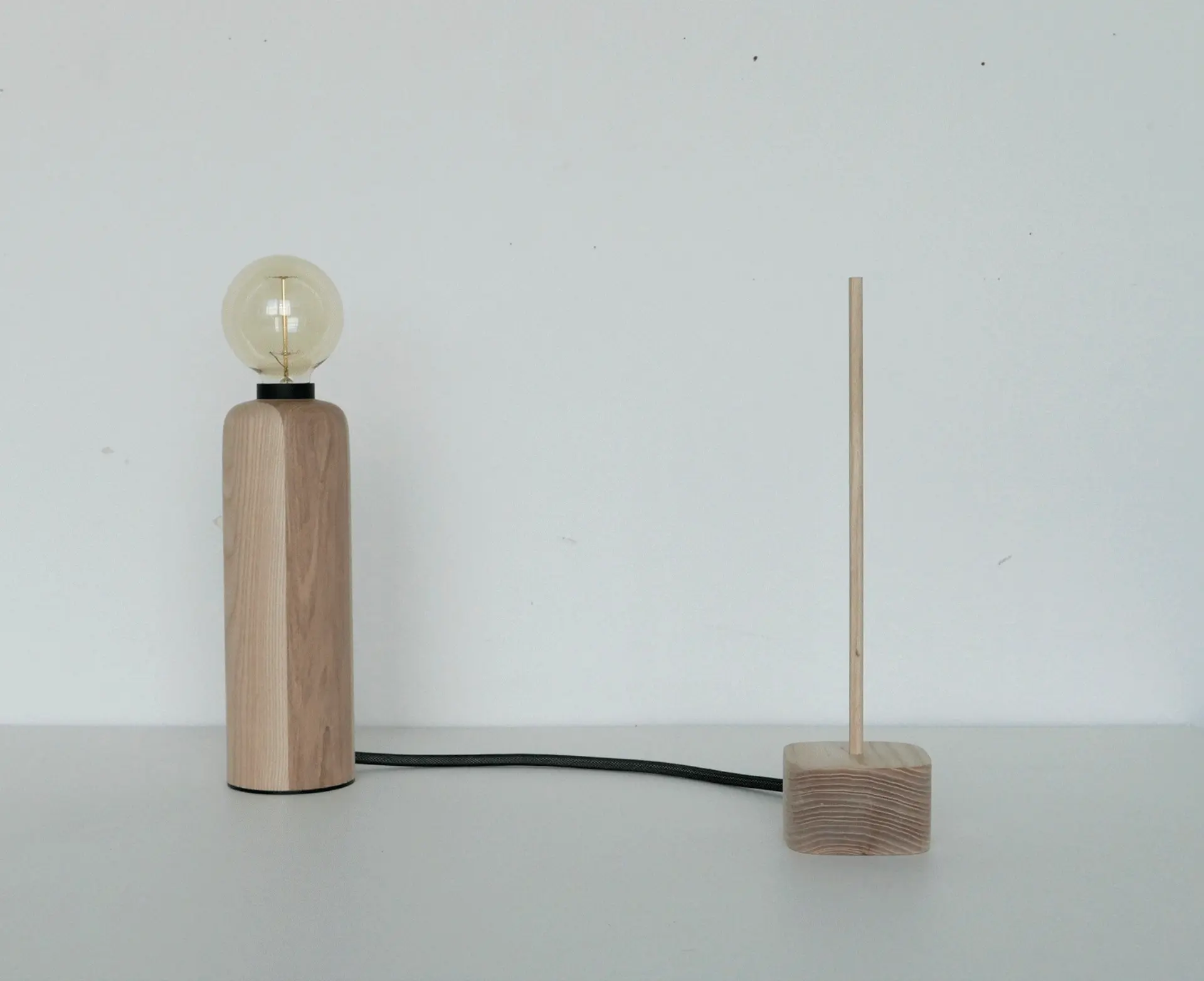
Kipinä, meaning a spark in Finnish, explores primitive and historical ways of making fire, and how those methods and interactions can be integrated into modern lighting. The project emphasizes the relationship between humans and light. The project is telling a story through the evolution of artificial light in a playful way.
Project Information

Project name
Kipinä - a Spark
Graduation project
Royal College of Art 2019
Measurements
Candle : L 200 W 100 H 150Flint : L 150 W 100 H 150Hand Drill : L 150 W 150 H 350Match : L 90 W 20 H 90Lamp : L 100 W 100 H 390
Execution
ArduinosSensors
Materials
Ash
Surface treatment
Oil WaxStain
Project year
2019


In this approach I am using a candle more precisely the flame of a candle as a switch and as a timer for electrical light. When the candle is lit the light is on. Turning the light down happens by blowing the candle out. Candle measures time and it works as a visual narrative to recognize how much time is left. It also works as a reminder to turn the light off when leaving the house
Approach


Fire is a chemical reaction requiring some input of energy – a spark or a spasm of heat to begin the process. With this approach a spark will activate and switch the light on. In the beginning of the fire making process, blowing oxygen into the fire is often needed. Increasing the brightness and extinguishing the electrical light happens by blowing, simulating the natural behaviour of fire.
Approach


Fire can be created through friction by rapidly grinding pieces of wood against each other. By rubbing hands together around the spindle, downward pressure and spinning creates potentially heat and the glowing coal can be used for making actual fire. Turning the electrical light on happens by spinning the wooden dowel. Electrical light will react to the speed of the spindle and increases at the same time. When certain level has been reached the light is on. After a while the same interaction needs to be repeated, otherwise the light will slowly dim down.
Approach
